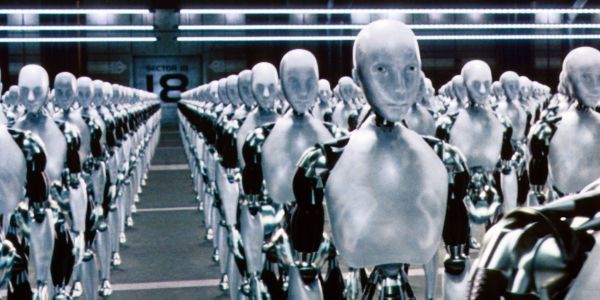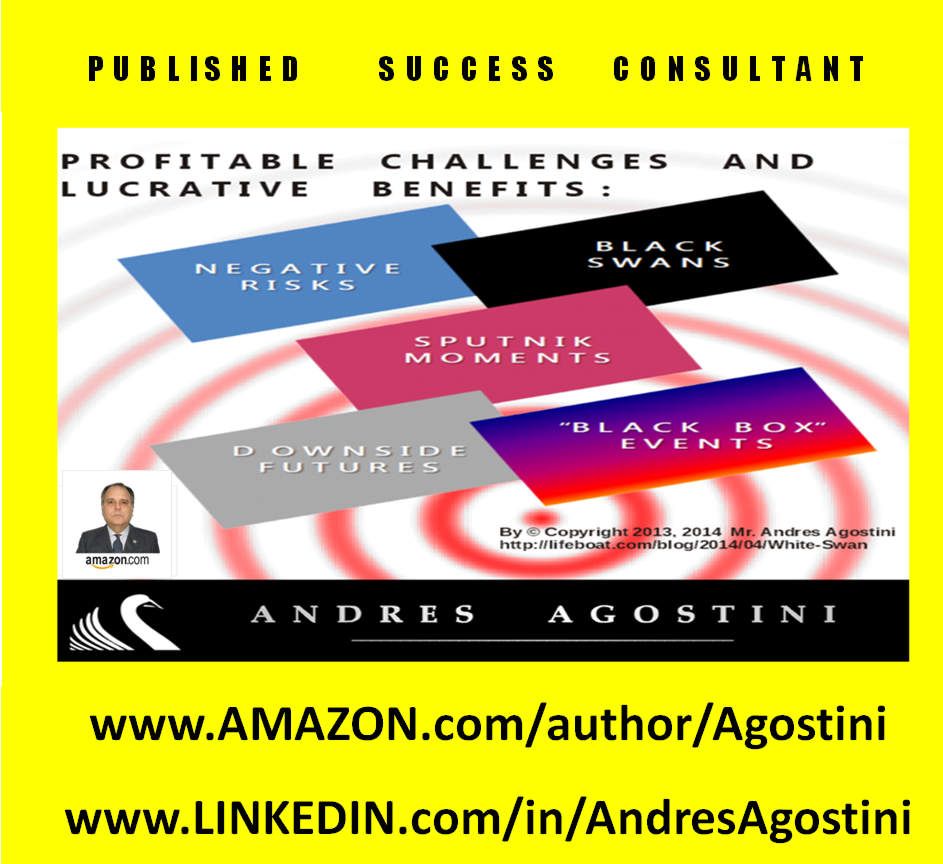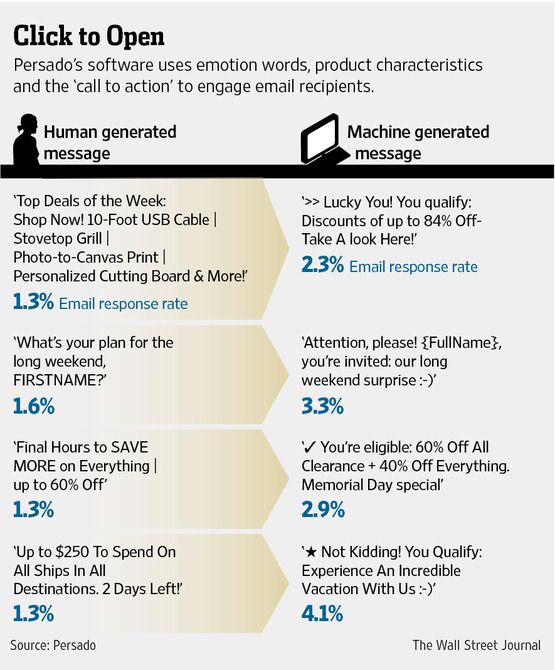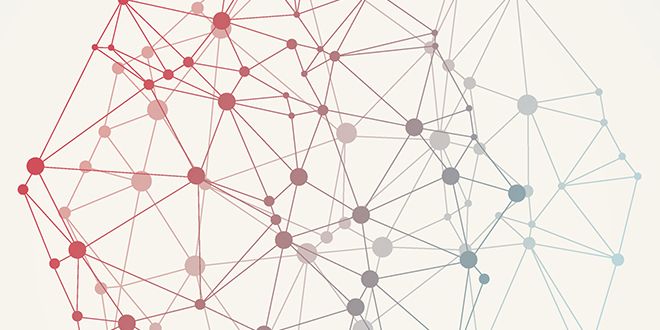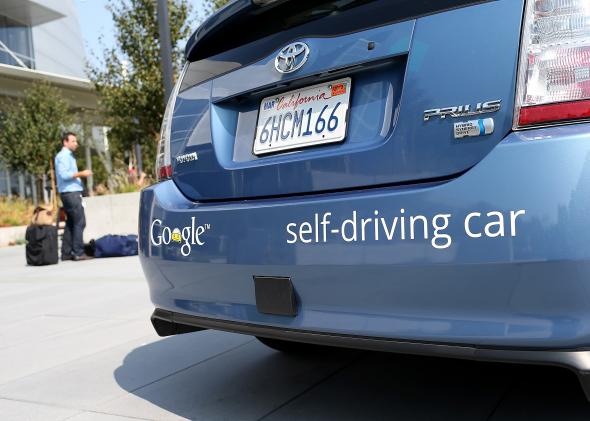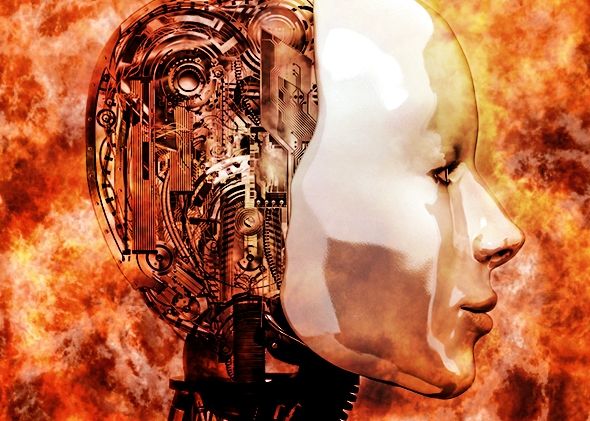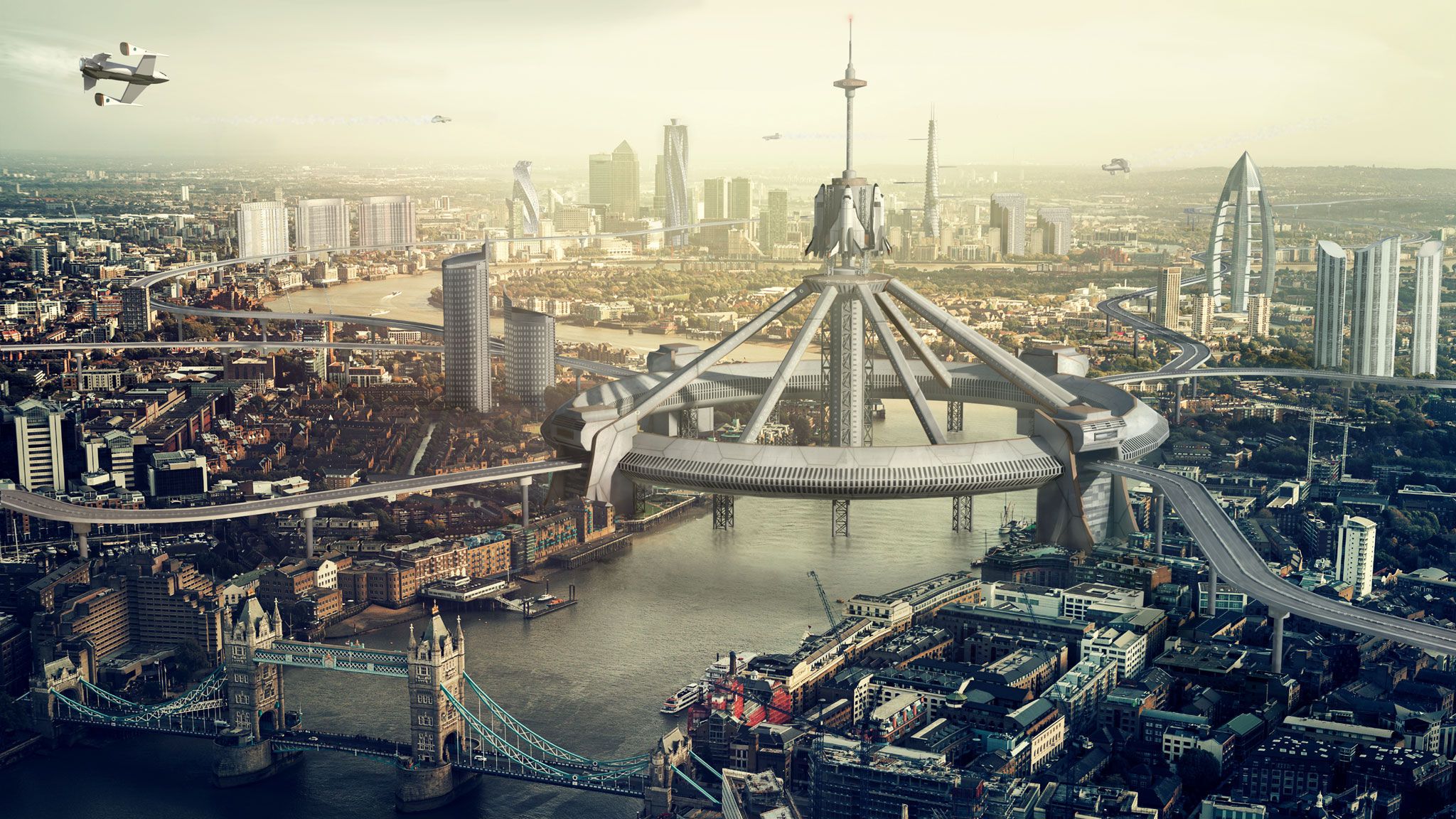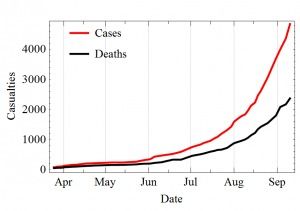FUTURISM UPDATE (September 19, 2014)
WALL STREET JOURNAL: It’s Time to Take Artificial Intelligence Seriously. No Longer an Academic Curiosity, It Now Has Measurable Impact on Our Lives http://online.wsj.com/articles/its-time-to-take-artificial-intelligence-seriously-1408922644
Blue Origin to Replace Russia’s RD-180 for U.S. Rocket Flights http://www.21stcentech.com/blue-origin-replace-russias-rd-180-u-s-rocket-flights/
CBSNEWS: Popular Science picks best inventions for 2014 http://www.cbsnews.com/videos/popular-science-picks-best-inventions-for-2014/
BUSINESS INSIDER: World Bank: Economic Impact Of Ebola Outbreak Could Be ‘Catastrophic’ http://www.businessinsider.com/world-bank-ebola-could-be-catastrophic-2014-9#ixzz3Di1nviFA
BUSINESS INSIDER: A Declassified CIA Paper Shows How Close The US And The Soviets Really Came To War In 1983 http://www.businessinsider.com/how-close-the-us-and-the-soviets-came-to-war-in-1983-2014-9#ixzz3Di2QFSAu
BUSINESS INSIDER: Scientists Have Detected A New Stellar Explosion That Might Be A Supernova http://www.businessinsider.com/supernova-candidate-explosion-in-ngc-1566-2014-9#ixzz3Di2pCdGE
THE ECONOMIST: The rise and rise of Xi Jinping. Xi who must be obeyed www.economist.com/news/leaders/21618780-most-powerful-and-popular-leader-china-has-had-decades-must-use-these-assets-wisely-xi
KAI: Capturing the motion of a single molecule in real time as it oscillates from one quantum state to another http://www.kurzweilai.net/capturing-the-motion-of-a-single-molecule-in-real-time-as-it-oscillates-from-one-quantum-state-to-another
KAI: Measuring the motion patterns of bacteria in real time http://www.kurzweilai.net/and-so-they-beat-on-flagella-against-the-cantilever
KAI: Twisting radio beams to transmit ultra-high-speed data http://www.kurzweilai.net/twisting-radio-beams-to-transmit-ultra-high-speed-data
NATURE: Machine learning approaches to genomics http://www.nature.com/encode/threads/machine-learning-approaches-to-genomics
MAX PLANCK INSTITUTE: Intelligent Systems: Perception — Action — Learning http://www.is.mpg.de/research
MAX PLANCK INSTITUTE: Machine Learning — Pioneering Research Network http://www.is.mpg.de/15591077/Maschinen-das-Lernen-lehren
WIRED: A Military-Grade Drone That Can Be Printed Anywhere http://www.wired.com/2014/09/military-grade-drone-can-printed-anywhere/?mbid=social_fb
REUTERS: Alibaba IPO prices at top of range, raising $21.8 billion http://www.reuters.com/article/2014/09/18/us-alibaba-ipo-idUSKBN0HD2CO20140918
REUTERS: SAP agrees to buy expense software maker Concur for $7.3 billion http://www.reuters.com/article/2014/09/18/us-concur-tech-sap-se-m-a-idUSKBN0HD2N220140918
REUTERS: Qualcomm shows off robot technology, but mum on China dispute http://www.reuters.com/article/2014/09/18/us-qualcomm-robots-idUSKBN0HD2LA20140918
BLOOMBERG: Alibaba Overtakes Amazon as Most Highly Valued Online Retailer http://www.bloomberg.com/news/2014-09-18/alibaba-overtakes-amazon-as-most-highly-valued-online-retailer.html
FORBES: FDA Approves Lilly’s Once-Weekly Shot For Diabetes http://www.forbes.com/sites/larryhusten/2014/09/18/fda-approves-lillys-once-weekly-shot-for-diabetes/?utm_source=dlvr.it&utm_medium=twitter
FAST COMPANY: WHAT PAYPAL’S VP OF TECHNOLOGY LEARNED FROM FACING ADVERSITY http://www.fastcompany.com/3035876/strong-female-lead/what-paypals-vp-of-technology-learned-from-facing-adversity
THE ECONOMIST: MANAGEMENT thinkers have paid surprisingly little attention to how Chinese firms are run. http://www.economist.com/news/business/21616974-chinese-management-ideas-are-beginning-get-attention-they-deserve-china-wave?fsrc=scn/tw_ec/the_china_wave
FINANCIAL TIMES: Lotus to cut workforce by more than a quarter http://www.ft.com/cms/s/0/00758d68-3f51-11e4-984b-00144feabdc0.html#axzz3Dinet9ol
AMERICAN SCIENTIST: Computers get faster every year, but Seth Lloyd thinks he has the limit finally in sight. http://www.americanscientist.org/bookshelf/pub/seth-lloyd
IEEE Spectrum: Wine Critics Watch Out: Artificial Tongues Are Getting Better http://spectrum.ieee.org/nanoclast/biomedical/devices/pucker-up-for-nanowine-tasting-test
SCIENCE DAILY: First blood test to diagnose depression in adults http://www.sciencedaily.com/releases/2014/09/140917121229.htm
PHYS ORG: Spacesuits of the future may resemble a streamlined second skin http://phys.org/news/2014-09-spacesuits-future-resemble-skin.html
PHYS ORG: World population to keep growing this century, hit 11 billion by 2100 http://phys.org/news/2014-09-world-population-century-billion.html
ENGINEERING: Airbus Patents a VRHelmet to Make Flying LessAgonizing www.engineering.com/DesignerEdge/DesignerEdgeArticles/ArticleID/8528/Airbus-Patents-a-VR-Helmet-to-Make-Flying-Less-Agonizing.aspx
ENGINEERING: Harvard Awarded DARPA Exosuit Contract http://www.engineering.com/DesignerEdge/DesignerEdgeArticles/ArticleID/8507/Harvard-Awarded-DARPA-Exosuit-Contract.aspx
MAX PLANCK INSTITUTE: New 3D-image modelling technology enables anyone to have a 3D digital doppelgänger http://www.mpg.de/7975368/bodylab-3D-modelling-technology
THE ATLANTIC: What Happens When We All Live to 100? http://www.theatlantic.com/features/archive/2014/09/what-happens-when-we-all-live-to-100/379338/
NEW SCIENTIST: Quantum internet could keep us safe from spying eyes http://www.newscientist.com/article/mg22329873.000-quantum-internet-could-keep-us-safe-from-spying-eyes.html#.VBuhfhYb8mw
NATURE: Need an organ? Just print some stem cells in 3D http://www.newscientist.com/article/mg21729035.600-need-an-organ-just-print-some-stem-cells-in-3d.html#.VBuiUxYb8mw
TECHNOLOGY REVIEW: 3-D Printing for the Masses. A rapid-prototyping service opens up technology to hobbyists and designers. http://www.technologyreview.com/news/410536/3-d-printing-for-the-masses/
NEW YORKER: Does Silicon Valley Have a Contract-Worker Problem? http://nymag.com/daily/intelligencer/2014/09/silicon-valleys-contract-worker-problem.html?utm_source=digg&utm_medium=diggtwitter
STANFORD UNIVERSITY: 3-D printing creates murky product liability issues, Stanford scholar says http://news.stanford.edu/news/2013/december/3d-legal-issues-121213.html
REUTERS: Home Depot breach bigger than Target at 56 million cards http://www.reuters.com/article/2014/09/18/us-home-depot-dataprotection-idUSKBN0HD2J420140918
MOSCOW TIMES: Russia’s Gas Supply Cuts to Europe Bolster Gazprom’s Bargaining Power http://www.themoscowtimes.com/business/article/russia-s-gas-supply-cuts-to-europe-bolster-gazprom-s-bargaining-power/507397.html
MOSCOW TIMES: Anti-Aircraft Missile Lands Near Chita http://www.themoscowtimes.com/news/article/anti-aircraft-missile-lands-near-chita/507391.html
DER SPIEGEL: Germany’s Ailing Infrastructure: A Nation Slowly Crumbles http://www.spiegel.de/international/germany/low-german-infrastructure-investment-worries-experts-a-990903.html
THE ECONOMIST: Self-driving cars. Coming to a street near you. http://www.economist.com/news/business-and-finance/21618531-making-autonomous-vehicles-reality-coming-street-near-you?fsrc=scn/tw_ec/coming_to_a_street_near_you
www.3ders.org: NASA to grow 3D printed space wood http://www.3ders.org/articles/20140210-nasa-to-3d-print-wood-in-space.html
CNN: The next frontier in 3-D printing: Human organs http://edition.cnn.com/2014/04/03/tech/innovation/3-d-printing-human-organs/
FOREIGN AFFAIRS: Flying High. The Improbable Rise of the Gulf Airlines http://www.foreignaffairs.com/articles/142000/jim-krane/flying-high
FOREIGN AFFAIRS: The End of Swedish Exceptionalism. Why the Elections Mark a New Era for Politics http://www.foreignaffairs.com/articles/141998/bo-rothstein/the-end-of-swedish-exceptionalism
FOREIGN AFFAIRS: The End of Swedish Exceptionalism. Why the Elections Mark a New Era for Politics http://www.foreignaffairs.com/articles/141998/bo-rothstein/the-end-of-swedish-exceptionalism
FOREIGN AFFAIRS: Europe’s Jewish Problem. The Misunderstood Rise of European Anti-Semitism http://www.foreignaffairs.com/articles/141990/yascha-mounk/europes-jewish-problem
FOREIGN AFFAIRS: Europe’s Jewish Problem. The Misunderstood Rise of European Anti-Semitism http://www.foreignaffairs.com/articles/141990/yascha-mounk/europes-jewish-problem
FOREIGN POLICY: Hammered by the West, Putin Turns East. Russia and China are close to another mammoth natural gas deal that could reshape the world’s energy map. http://www.foreignpolicy.com/articles/2014/09/18/hammered_by_the_west_putin_turns_east_russia_china_gas_altai
_____________________________________________
By Mr. Andres Agostini
www.linkedin.com/in/andresagostini
www.amazon.com/Author/Agostini
